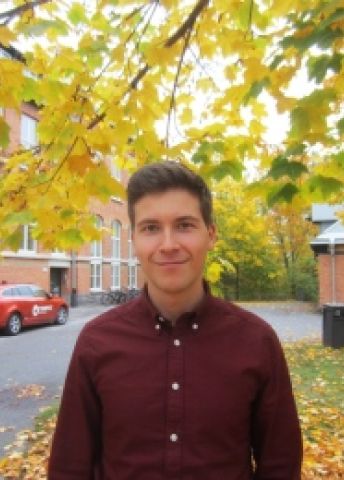
Program for mathematics 2023
Grant to a post-doctoral position abroad
Erik Lindell
Stockholm University
Postdoc at University of Copenhagen in Denmark
Grant to a post-doctoral position abroad
Erik Lindell
Stockholm University
Postdoc at University of Copenhagen in Denmark
Elusive symmetries in geometric spaces
Erik Lindell will receive his doctoral degree in mathematics from Stockholm University in 2023. Thanks to a grant from the Knut and Alice Wallenberg Foundation, he will hold a postdoctoral position with Professor Nathalie Wahl at the Department of Mathematical Sciences, University of Copenhagen in Denmark.
Within algebraic topology, tools from algebra are used to investigate abstract geometric spaces, which are important study objects in the branch of mathematics called topology. Eighteenth-century mathematician Leonhard Euler can be regarded as the grandfather of algebraic topology, thanks to his famous formula for the relationship between the number of faces, vertices, and edges of a polyhedron.
Algebraic methods in studies of geometric objects were refined throughout the nineteenth century and culminated in the outstanding work of Frenchman Henri Poincaré. His fundamental conjecture from 1904 says that every closed three-dimensional object without holes is the surface of a four-dimensional ball. Proving Poincaré’s conjecture took almost a century and many new ideas and mathematical tools.
One tool in algebraic topology is the symmetries of topological spaces that preserve some properties of these spaces. Two symmetries can also be repeated sequentially to form a third. The set of symmetries thus has the algebraic structure of a group, leading to rich algebraic theories such as mapping class groups.
The upcoming project is particularly interested in using algebraic methods to investigate low dimensional topological objects such as graphs and surfaces, as well as the internal relationships between the algebraic structures associated with such objects. The study of mapping class groups and homology is fundamental to low dimensional topology. Some symmetries leave the homology unchanged, and this part of the mapping class group is called the Torelli group. So far, little is known about the Torelli groups and new methods are necessary to investigate them more closely.